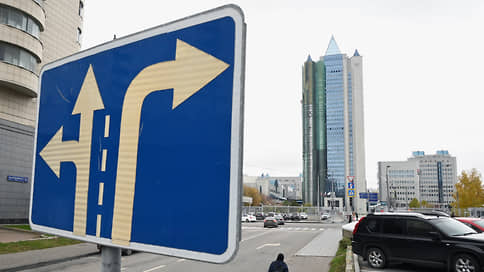The revenue of the gas industry of the Russian Federation can recover only by 2030
[ad_1]

Gas production in the Russian Federation in 2023 due to the loss of the EU export market may fall by 30 billion cubic meters from the level of 2022 and by 120 billion cubic meters from the level of 2021, follows from a study by analysts from Yakov and Partners. It will be possible to make up for these falling volumes in the next five to seven years if the Russian Federation manages to rebuild gas supply routes, find new buyers in Asia, and also increase the potential of the domestic market. At the same time, gas industry revenues will remain lower than in 2021 until 2030, but even with a return to the previous level, the share of exports in revenue will fall to 50-60%.
The reduction of Russia’s presence in the European gas market and, as a result, the reduction in the industry’s revenue and the possibility of commercializing gas reserves in the next five to seven years must be compensated for by revising the strategy for gas supplies abroad, the potential of the domestic market and the creation of competitive projects in the gas chemistry, analysts say. Yakov & Partners (former McKinsey).
The Russian Federation began to significantly reduce gas production in 2022 after the fall in pipeline gas exports to Europe against the backdrop of hostilities in Ukraine. Exports in 2022 fell by 32.3% year-on-year, to 167 billion cubic meters, production decreased by 11.8%, to 672 billion cubic meters.
According to Yakov & Partners analysts, pipeline gas exports in 2023 will amount to 80 billion cubic meters, another 46 billion cubic meters will be exported in the form of LNG. The volume of domestic consumption is estimated at 510-520 billion cubic meters.
Thus, the forced decline in production in 2023 may be up to 30 billion cubic meters, the total reduction in production from the level of 2021 will reach 120 billion cubic meters.
The implementation of the planned export pipeline projects will not make it possible to compensate for the lost volumes, analysts say. Thus, 50 billion cubic meters per year can be sent to China via the Power of Siberia-2, up to 20 billion cubic meters can be delivered to Kazakhstan and Uzbekistan, and another 10 billion cubic meters can be delivered through Turkey if the project to create a gas hub is implemented. In total, by 2030, these routes can provide up to 80 billion cubic meters of export per year. To compensate for all the lost export volumes, it will be necessary to develop export LNG projects and projects in the field of gas chemistry, as well as increase domestic gas consumption, including from industry, including the conversion of part of Siberian TPPs from coal to gas after the implementation of the Power of Siberia-2 project “.
The revenue of the gas industry of the Russian Federation in 2023 may halve from the level of 2022 – from $165 billion to $71 billion, in 2025 it will remain at the level of $73 billion. But by 2030, if gas prices stabilize and the main declared export projects are implemented, the figure could grow to $97 billion ($101 billion in 2021), according to Yakov and Partners. At the same time, the share of exports in revenue will decrease: it will be 50-60% against 74% in 2021 and 84% in 2022.
It will be difficult to compensate for lost revenues only at the expense of promising LNG projects, since their construction is associated with technological limitations.
According to analysts at Yakov & Partners, it may take up to five years to conduct R&D alone to enable the production of critical LNG equipment in the Russian Federation. As for domestic consumption, by 2030 it may grow by 17%, up to 485-495 billion cubic meters per year. As analysts expect, the main contribution to the growth of the indicator will be made by the electric power industry – by 25 billion cubic meters, up to 200 billion cubic meters by 2030, gas chemistry and agrochemistry – by 17 billion cubic meters, up to 79 billion cubic meters, industry – by 12 billion cubic meters, up to 97 billion cubic meters . Demand from the population and housing and communal services due to an increase in the level of gasification to 83% will increase by about 20 billion cubic meters, up to 117 billion cubic meters by 2030. The planned projects in the petrochemical industry can provide an increase in annual consumption by 26 billion cubic meters, but success depends on the refinement of Russian production technology.
Sergei Kondratyev from the Institute of Energy and Finance believes that the main question is what investments are required to implement the proposed plans to increase gas and gas chemistry exports and whether they are possible under the current tax regime, existing prices in the domestic market and the approach to their indexation. Analysts at Yakov & Partners are focused on the “mechanical distribution” of volumes, he believes, while it would make sense to evaluate the investment attractiveness of specific projects.
[ad_2]
Source link





